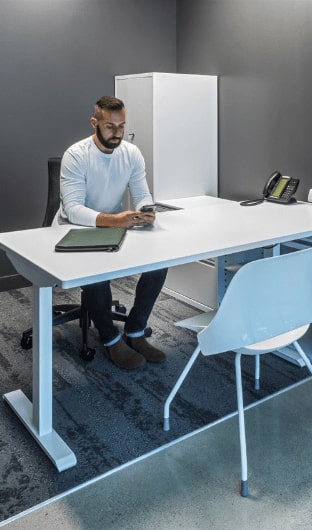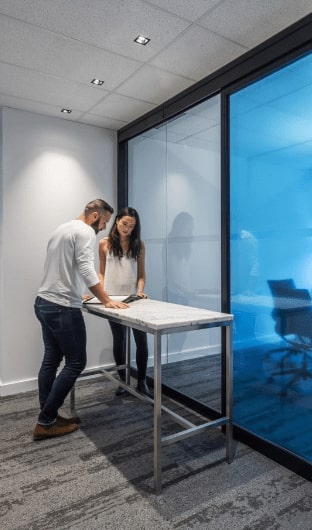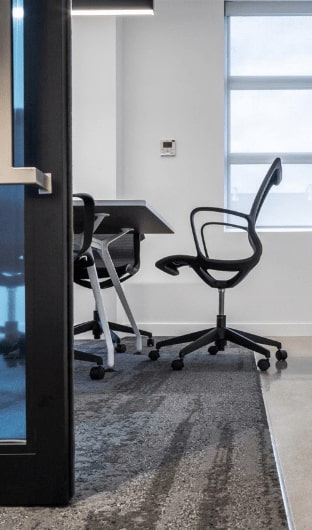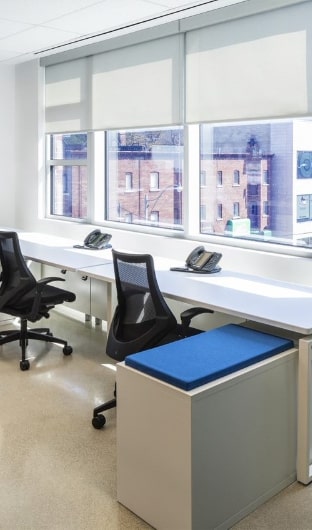
Top Healthcare Design Trends 2023
The healthcare industry is experiencing a significant shift in focus, with design playing an increasingly vital role. Design trends are reshaping the healthcare landscape as leading healthcare organizations acknowledge the profound impact they have on patient experience and outcomes.
Design goes beyond aesthetics; it encompasses creating healing environments that promote wellness and enhance the overall quality of care. From innovative architectural concepts to thoughtful healthcare furniture, healthcare facilities are embracing these trends to provide a more comfortable and supportive environment for patients.
In this article, we will delve into some of the current top healthcare design trends, offering insights into their importance and showcasing real-world examples where these design principles have been successfully implemented. So let’s dive in and discover how design is shaping the future of healthcare!
Embracing Biophilic Design for Healthier Environments
In today’s healthcare industry, the incorporation of biophilic design in interiors is becoming increasingly popular. This innovative approach focuses on integrating natural elements into healthcare spaces to create a healing environment that promotes patient well-being and improves overall outcomes.
One of the key benefits of biophilic design is its ability to reduce stress levels among patients. By incorporating elements such as natural light, water features, and greenery, healthcare facilities can create a calming atmosphere that helps patients feel more at ease during their stay. Studies have shown that exposure to nature has a positive impact on mental health, reducing anxiety and improving overall mood.
Furthermore, biophilic design also plays a crucial role in enhancing indoor air quality within healthcare settings. The inclusion of green spaces not only adds aesthetic value but also helps purify the air by filtering out pollutants and releasing oxygen. This can significantly improve respiratory conditions and contribute to better patient outcomes.
By embracing biophilic design principles, healthcare communities can create environments that cater to the specific needs of individuals with behavioural health conditions. Natural elements have been proven to positively influence mental health, promoting relaxation and reducing aggression or agitation commonly experienced by patients in these settings.
In recent years, the real estate industry has recognized the importance of biophilic design in healthcare facilities. Developers are now prioritizing this approach when constructing new buildings or renovating existing ones. With an increasing focus on patient-centered care, incorporating nature-inspired designs has become an essential aspect of providing high-quality healthcare services.
Rethinking the Design Process for Improved Healthcare Spaces
Collaborative Approach: Engaging stakeholders in the design decisions of health facilities is an important step in creating a thoughtful healthcare space. By involving healthcare professionals, administrators, and patients in the design process, a collaborative approach ensures that the final spaces meet their needs effectively. This approach promotes communication, fosters a sense of ownership, and leads to more successful outcomes.
User-centred Design Principles: Applying user-centred design principles enhances functionality and efficiency in healthcare spaces. By prioritizing patient experience and incorporating their feedback, hospitals can create environments that are comfortable, accessible, and supportive. This approach considers factors such as room layouts, lighting, acoustics, and healthcare furniture arrangements to optimize the patient journey.
Adapting Designs to Evolving Needs: Flexibility is key when designing healthcare spaces to accommodate evolving patient needs. Hospitals must consider retrofitting existing spaces or creating adaptable designs that can be modified as requirements change over time. This ensures that facilities can efficiently respond to advancements in medical technology and shifting patient demographics.
Integration of Evidence-Based Research: Incorporating evidence-based research into the design process helps create healthcare spaces that promote positive outcomes. By considering studies on infection control measures, noise reduction strategies, and ergonomic solutions for staff members, designers can make informed decisions that enhance patient safety and well-being.
Through the implementation of the above-mentioned strategies, hospitals can create environments that prioritize patient experience while providing efficient solutions for staff members. The continuous improvement of healthcare design contributes to better outcomes for both patients and medical professionals.
Prioritizing Infection Control and Comfort in Design
In healthcare design, prioritizing infection control and comfort is crucial to ensure the well-being of patients and caregivers. By implementing effective measures, facilities can create a safe and comfortable environment for everyone involved.
- Implementing infection prevention measures in facility layout: Designing healthcare facilities with infection control in mind is essential. This includes creating separate areas for different patient needs, such as isolation rooms for contagious individuals. By strategically placing these areas within the building, the risk of cross-contamination can be minimized.
- Optimizing ventilation systems for clean air circulation: Proper ventilation plays a vital role in maintaining a healthy environment. Healthcare design should focus on optimizing ventilation systems to ensure clean air circulation throughout the facility. This helps reduce the spread of airborne infections and provides a safer atmosphere for patients and staff.
- Incorporating comfortable furniture and amenities for patients’ comfort: Patient comfort should not be overlooked in healthcare design. Incorporating comfortable healthcare furniture and amenities can greatly enhance the overall experience for patients during their stay. Thoughtful consideration should be given to factors such as seating options, bedding quality, lighting, and access to entertainment and amenities.
- Ensuring easy access to hand hygiene facilities throughout the building: Hand hygiene is crucial in preventing infections. Healthcare design should prioritize easy accessibility to hand hygiene facilities throughout the building. Placing hand sanitizers or washing stations at convenient locations encourages proper hand hygiene practices among patients, caregivers, and providers.
The Future of Healthcare Design
In conclusion, the future of healthcare design is focused on embracing biophilic design principles, rethinking the design process, and prioritizing infection control and comfort. Biophilic design aims to create healthier environments by incorporating natural elements such as plants, sunlight, and water features. This approach has been shown to improve patient outcomes and staff well-being. Rethinking the design process involves considering the needs and experiences of patients, families, and healthcare providers to create spaces that are functional, efficient, and supportive.
Furthermore, infection control and comfort are important parameters in healthcare design. Designing spaces that minimize the spread of infections through proper ventilation systems, hand hygiene stations, and appropriate layouts can contribute to a safer environment for patients and staff alike. Prioritizing comfort through ergonomic furniture, soothing colours, and noise reduction measures can enhance the overall experience for patients during their stay.
To stay ahead in this evolving field of healthcare design trends, it is imperative for designers and healthcare professionals to continue learning about new research findings and innovative approaches. By staying up-to-date with the latest trends in healthcare design, professionals can provide optimal environments that promote healing while meeting the diverse needs of patients. Visit https://harkeloffice.com/healthcare to find out how our healthcare design experts at Harkel Office can create a modern, comfortable, and nourishing healthcare space that promotes healing and wellness.





